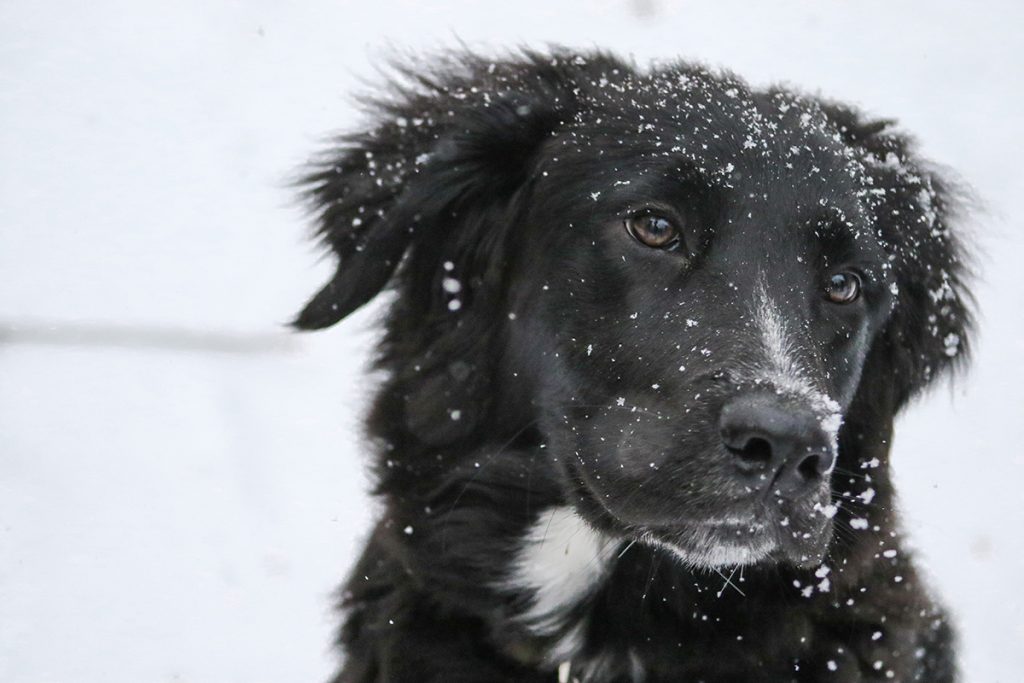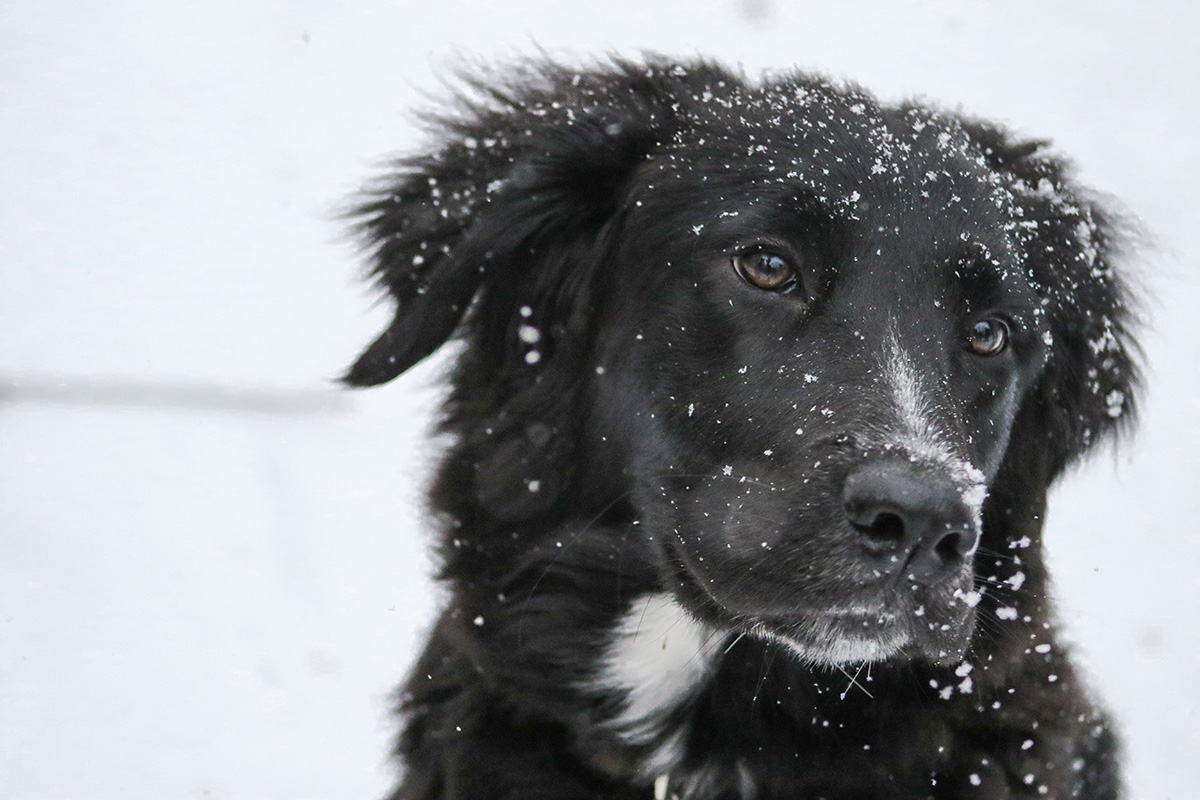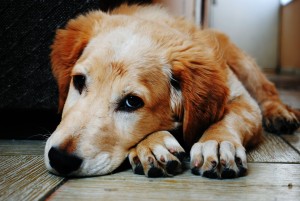
With the temperatures dropping, you may be pulling out extra layers just to stay warm. However, your dog doesn’t have the benefit of pulling a sweater out of the closet to wear. While some parts of the country may experience mild winters, Buffalo is notorious for snow and cold weather. Here are some tips too keep your dog warm and safe when the temperatures drop below freezing.
Dog Breeds and Cold
It’s a common misconception that because pets have fur, they can tolerate the cold better than humans. This is not necessarily the case. Our dogs and cats are used to the warmth of indoor shelters and cold weather can be as hard on them as it is on humans. In fact, different dog breeds react to cold weather in different ways. Part of protecting your dog is knowing if they can even withstand the cold in any capacity. A Huskey may love to run in the rain and snow while a chihuahua may want to burrow into a pile of fluffy blankets. Dogs with thick fur will stay warm naturally, but dogs with thin coats may need some extra help. Know your breed’s fur type and if, as a breed, they like the cold. Most importantly, watch how your dog reacts to the cold. If they don’t like it, don’t make them stay outside.
Potential Winter Dangers
Before going outside, be aware of some things to watch out for. Ice and frozen water are a real danger to dogs and puppies who may not realize where they are stepping. Even if the ice is thick enough, keep them away from these areas. Your dog may lose control on the slippery surface and tear a muscle or ligament. Aside from ice, here are a few more things to watch for.
Frostbite and Hypothermia
Know the symptoms of these serious weather concerns. Frostbite may not be immediately obvious. Your dog’s ears, tail, and paws can get so cold that they develop ice crystals as the body pulls blood from the extremities to the center of the body. Watch for signs of pale or grey skin or skin that is hard and cold. Be careful as you warm your dog up. Frostbitten areas are extremely painful as they warm, so warm them up gradually. Hypothermia occurs when a dog spends too much time in the cold, is wet in cold temperatures, or has poor health and is exposed to the cold. They will shiver and have cold ears and feet. Then they may show signs of lethargy and depression. As it worsens, their muscles will stiffen, heart and breathing rate will slow down and they will not respond to stimuli.
Antifreeze
With winter comes antifreeze. Dogs will readily lick or dring this sweet liquid, but don’t let them. Even in small amounts, antifreeze is extremely toxic and can be fatal. Keep your dog out of the garage and off the driveway where they can encounter antifreeze and other toxic chemicals.
The Car
Whatever you do, do not leave your dog unattended in the car. Just as cars can get hot in the summer, freezing cold temperatures can be dangerous for your dog in the winter. Cars cool down really fast in the winter and even if it’s not a direct health risk, they can be uncomfortable. Leaving your dog in a car that is running is also risky. If your tailpipe is blocked or your dog is in the garage with a car running, there is a risk of carbon monoxide poisoning.
Paw Protection
Just like we develop foot cracks in winter, so can your dog experience cracked paws. Always wipe off their paws when they come inside. Ice, snow, salt, and toxic chemicals can build up on your dog’s feet. There could be serious problems if your dog licks their paws and there are salt and antifreeze on them. Wipe them down with a warm washcloth and check their pads for injuries. Trim the hair that grows between their pads to prevent ice buildup. If your dog shows signs of discomfort, try using dog booties to protect their paws.
Tips For Keeping Your Dog Warm
Pet-Proofing Your Home
There are even winter dangers in your home. Dogs will seek heat in winter and want o snuggle near heating sources. Keep an eye on them when around space heaters. Dogs can burn themselves, or tip them over and start a fire. Fireplaces are a similar threat, so make sure you implement a pet-proof system to keep your pet out of harm’s way. Heated pet mats may seem like a solution, but they can burn your pet’s skin. Warm blankets create a snug environment and raised beds keep your dog off of cold tiles or concrete.
Dress them warmly
If you have a small dog and a dog with short hair give them a little help. This goes for young and old dogs as well. Puppies have less muscle and fat than adults, so they are less cold tolerant. Plus their coats won’t be as thick or long to offer protection. A sweater or coat may be a nice addition to keep your pet more comfortable when outside. If your dog is going to be outside for longer than it takes them to go to the bathroom, provide something to cover their head as well.
Feeding
Pets stay warm from burning calories, so they need extra calories to increase their body warmth. Puppy food and “performance” diets offer more calories, but you may need to increase their intake if your dog spends a lot of time outside. But beware. Your pets may need an extra layer in the winter, but that should come from their coat and not a layer of fat. Cold temperatures being about laziness, so be attentive to your dog’s activity level and adjust their calories accordingly. A high quality, whole food, meat-based diet will ensure a healthy coat and give them good energy for the winter.
Limit Time Outdoors.
No dog is meant to spend long amounts of time outdoors. Just because they have a thick coat, doesn’t mean that protects all body parts. Don’t leave them outside unattended for any amount of time and only take them outside if they are going to be active or going to the bathroom. You may have to shorten your walk if it’s really cold. A good rule is if you’re ready to come in, your dog will probably be ready too. Go outside in the late morning or early afternoon, when temperatures are a little warmer. Spend time outdoors when it is sunny because not only will it be warmer, but your dog will also get a boost of vitamin D.




